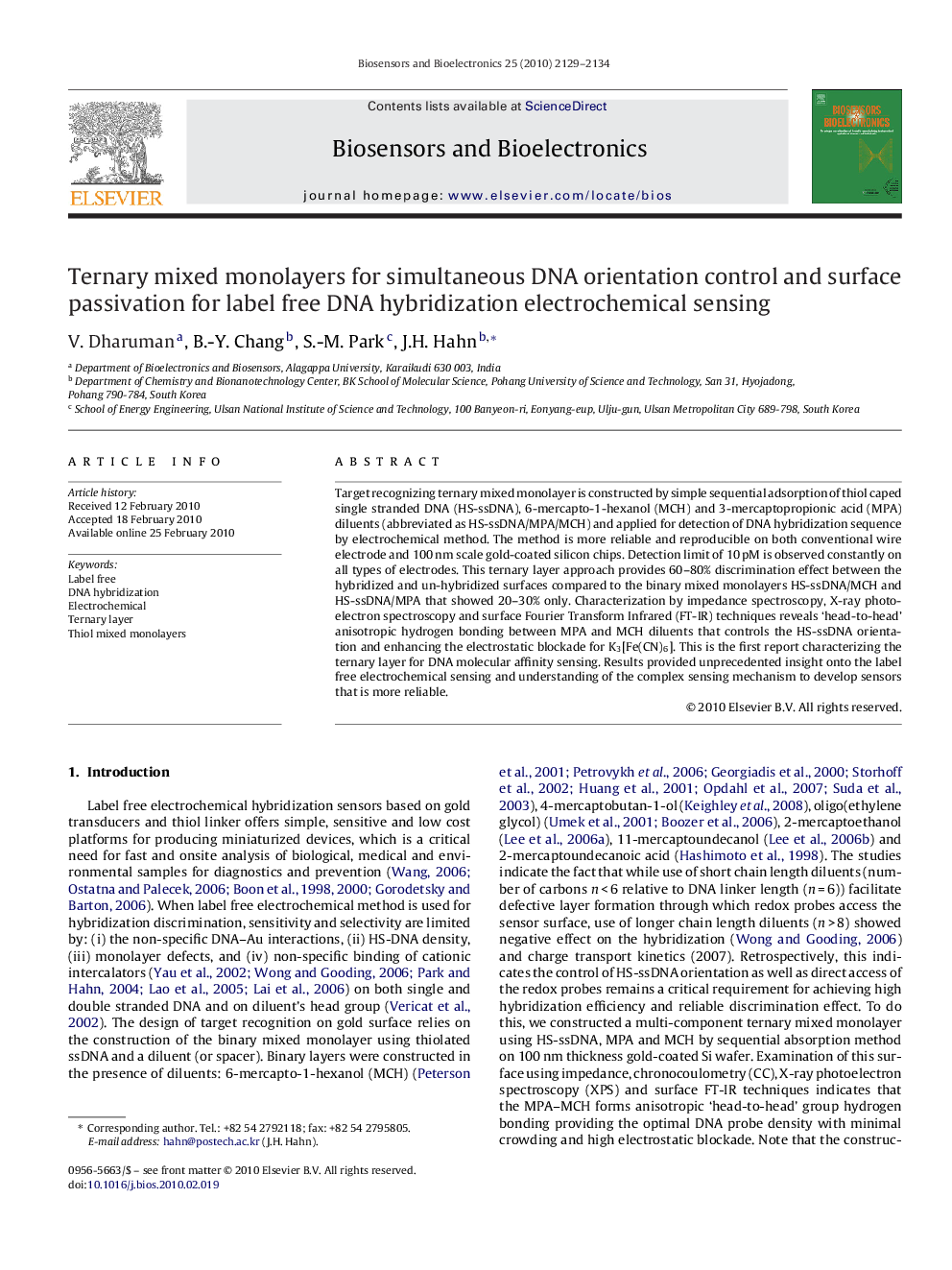| Article ID | Journal | Published Year | Pages | File Type |
|---|---|---|---|---|
| 868766 | Biosensors and Bioelectronics | 2010 | 6 Pages |
Target recognizing ternary mixed monolayer is constructed by simple sequential adsorption of thiol caped single stranded DNA (HS-ssDNA), 6-mercapto-1-hexanol (MCH) and 3-mercaptopropionic acid (MPA) diluents (abbreviated as HS-ssDNA/MPA/MCH) and applied for detection of DNA hybridization sequence by electrochemical method. The method is more reliable and reproducible on both conventional wire electrode and 100 nm scale gold-coated silicon chips. Detection limit of 10 pM is observed constantly on all types of electrodes. This ternary layer approach provides 60–80% discrimination effect between the hybridized and un-hybridized surfaces compared to the binary mixed monolayers HS-ssDNA/MCH and HS-ssDNA/MPA that showed 20–30% only. Characterization by impedance spectroscopy, X-ray photoelectron spectroscopy and surface Fourier Transform Infrared (FT-IR) techniques reveals ‘head-to-head’ anisotropic hydrogen bonding between MPA and MCH diluents that controls the HS-ssDNA orientation and enhancing the electrostatic blockade for K3[Fe(CN)6]. This is the first report characterizing the ternary layer for DNA molecular affinity sensing. Results provided unprecedented insight onto the label free electrochemical sensing and understanding of the complex sensing mechanism to develop sensors that is more reliable.
